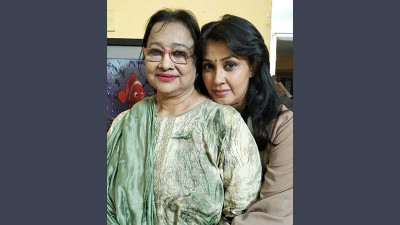 AP file photo: Iranian President Ebrahim Raisi
AP file photo: Iranian President Ebrahim Raisi Rescuers on Monday found a helicopter that was carrying Iranian President Ebrahim Raisi, the country’s foreign minister and other officials that had apparently crashed in the mountainous northwest reaches of Iran the day before, though “no sign of life” was detected, state media reported.
As the sun rose Monday, rescuers saw the helicopter from a distance of some 2 kilometers (1.25 miles), the head of the Iranian Red Crescent Society, Pir Hossein Kolivand, told state media. He did not elaborate and the officials had been missing at that point by over 12 hours.
The incident comes as Iran under Raisi and Supreme Leader Ayatollah Ali Khamenei launched an unprecedented drone-and-missile attack on Israel last month and has enriched uranium closer than ever to weapons-grade levels.
Iran has also faced years of mass protests against its Shiite theocracy over an ailing economy and women’s rights — making the moment that much more sensitive for Tehran and the future of the country as the Israel-Hamas war inflames the wider Middle East.
Raisi was traveling in Iran’s East Azerbaijan province. State TV said what it called a “hard landing” happened near Jolfa, a city on the border with the nation of Azerbaijan, some 600 kilometers (375 miles) northwest of the Iranian capital, Tehran. Later, state TV put it farther east near the village of Uzi, but details remained contradictory.
With Raisi were Iran’s Foreign Minister Hossein Amirabdollahian, the governor of Iran’s East Azerbaijan province and other officials and bodyguards, the state-run IRNA news agency reported. One local government official used the word “crash,” but others referred to either a “hard landing” or an “incident.”
Early Monday morning, Turkish authorities released what they described as drone footage showing what appeared to be a fire in the wilderness that they “suspected to be wreckage of helicopter.” The coordinates listed in the footage put the fire some 20 kilometers (12 miles) south of the Azerbaijan-Iranian border on the side of a steep mountain.
Footage released by the IRNA early Monday showed what the agency described as the crash site, across a steep valley in a green mountain range. Soldiers speaking in the local Azeri language said: “There it is, we found it.”
Shortly after, state TV in an on-screen scrolling text said: “There is no sign of life from people on board.” It did not elaborate, but the semiofficial Tasnim news agency showed rescuers using a small drone to fly over the site, with them speaking among themselves saying the same thing. The footage showed the tail of the helicopter and brunt debris all around it.
Hard-liners had urged the public to pray. State TV aired images of hundreds of the faithful, some with their hands outstretched in supplication, praying at Imam Reza Shrine in the city of Mashhad, one of Shiite Islam’s holiest sites, as well as in Qom and other locations across the country. State television’s main channel aired the prayers nonstop.
In Tehran, a group of men kneeling on the side of the street clasped strands of prayer beads and watched a video of Raisi praying, some of them visibly weeping.
“If anything happens to him we’ll be heartbroken,” said one of the men, Mehdi Seyedi. ”May the prayers work and may he return to the arms of the nation safe and sound.”
IRNA called the area a “forest” and the region is known to be mountainous as well. State TV aired images of SUVs racing through a wooded area and said they were being hampered by poor weather conditions, including heavy rain and wind. Rescuers could be seen walking in the fog and mist.
Khamenei himself also urged the public to pray.
“We hope that God the Almighty returns the dear president and his colleagues in full health to the arms of the nation,” Khamenei said, drawing an “amen” from the worshipers he was addressing.
However, the supreme leader also stressed the business of Iran’s government would continue no matter what. Under the Iranian constitution, Iran’s vice first president takes over if the president dies with Khamenei’s assent, and a new presidential election would be called within 50 days. First Vice President Mohammad Mokhber already had begun receiving calls from officials and foreign governments in Raisi’s absence, state media reported.
Raisi, 63, a hard-liner who formerly led the country’s judiciary, is viewed as a protégé of Khamenei and some analysts have suggested he could replace the 85-year-old leader after Khamenei’s death or resignation.
Raisi had been on the border with Azerbaijan early Sunday to inaugurate a dam with Azerbaijan’s President Ilham Aliyev. The dam is the third one that the two nations built on the Aras River. The visit came despite chilly relations between the two nations, including over a gun attack on Azerbaijan’s Embassy in Tehran in 2023, and Azerbaijan’s diplomatic relations with Israel, which Iran’s Shiite theocracy views as its main enemy in the region.
Iran flies a variety of helicopters in the country, but international sanctions make it difficult to obtain parts for them. Its military air fleet also largely dates back to before the 1979 Islamic Revolution. IRNA published images it described as Raisi taking off in what resembled a Bell helicopter, with a blue-and-white paint scheme previously seen in published photographs. Footage from the crash site matched that paint pattern.
Raisi won Iran’s 2021 presidential election, a vote that saw the lowest turnout in the Islamic Republic’s history. Raisi is sanctioned by the U.S. in part over his involvement in the mass execution of thousands of political prisoners in 1988 at the end of the bloody Iran-Iraq war.
Under Raisi, Iran now enriches uranium at nearly weapons-grade levels and hampers international inspections. Iran has armed Russia in its war on Ukraine, as well as launched a massive drone-and-missile attack on Israel amid its war against Hamas in the Gaza Strip. It also has continued arming proxy groups in the Mideast, like Yemen’s Houthi rebels and Lebanon’s Hezbollah.
Meanwhile, mass protests in the country have raged for years. The most recent involved the 2022 death of Mahsa Amini, a woman who had been earlier detained over allegedly not wearing a hijab, or headscarf, to the liking of authorities. The monthslong security crackdown that followed the demonstrations killed more than 500 people and saw over 22,000 detained.
In March, a United Nations investigative panel found that Iran was responsible for the “physical violence” that led to Amini’s death.







